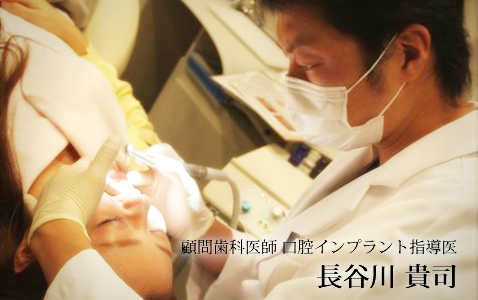
◆ドイツ口腔インプラント学会・指導医( 旧:国際口腔インプラント学会・指導医 )
◆日本歯科レーザー学会認定医
◆日本口腔インプラント学会会員
◆日本再生歯科医学会会員
【 略歴 】
1969年生まれ
日本歯科大学新潟歯学部卒
新潟大学歯学部付属病院にて臨床研修後同大学第一保存学教室に入局、岩久教授の下で3Mix-mp法を学ぶ
2002年 医療法人社団伸整会に勤務
2006年 ドイツフライブルグ大学口腔外科にてインプラントアドバンスサージカルコース修了
2010年 ドイツ口腔インプラント学会・指導医取得













Creating the Perfect Home Office Setup
Your work area greatly affects your wellness, productivity, and daily experience. Correct positioning can eliminate various complications related to extended sitting.
Recent studies confirms that workspace ergonomics matters significantly in avoiding work-induced discomfort.
Critical Factors of Ergonomic Design
Creating an proper office environment requires focus on several elements. Every component integrates to create a comfortable workspace.
The foundation of any quality arrangement is determining your body measurements. Just as you might calculate adult height for wellness tracking, understanding your body dimensions is crucial.
Important factors encompass:
– Correct work surface level
– Monitor positioning
– Seat configuration
– Keyboard and mouse placement
– Lighting conditions
Desk Height Is Critical
Among the most overlooked aspects of office setup is desk height. The work surface should be at a height that allows your upper limbs to be level with the ground when working.
If you have adjustable office desk options, achieving the ideal elevation is simpler. These desks adjust to various heights.
Active vs. Sedentary
The conversation between static and dynamic methods has become popular in recent years. Movement-based benefits are thoroughly studied.
Nonetheless, the secret is variety. Transitioning between sitting and standing during work hours provides the best results.
For learning about desk picking strategies systems, check this out for expert advice.
Monitor Placement
Appropriate monitor height placement eliminates cervical discomfort. Your monitor should be placed so the top is at or slightly below sight line.
When using multiple monitors, verify both are positioned at the identical level and orientation. This eliminates constant neck turning.
Input Devices Placement
Keyboard positioning directly affects hand comfort. Position your keyboard straight ahead of you, letting your forearms to remain straight while typing.
The cursor control should be positioned at the identical level as your keyboard, within reach to avoid excessive reaching.
Illumination
Proper illumination reduces visual fatigue. Natural light is best, but verify it won’t produce reflection on your monitor.
Direct light sources can supplement room light for certain work.
Investing in Quality Solutions
Concerning office furniture, quality matters. Desk quality comparison tools can help you make informed decisions.
Search for items with comprehensive coverage. Understanding desk warranty details secures your acquisition.
For comprehensive workspace setup guidance, visit this site and review specialist advice.
Don’t forget, creating an ergonomic workspace is an investment in your sustained comfort. Read more to improve your workspace setup.
Designing the Perfect Work Environment
Your workspace greatly affects your wellbeing, efficiency, and general satisfaction. Correct positioning can avoid many problems associated with long work hours.
Modern research shows that workspace ergonomics matters significantly in avoiding workplace injuries.
Essential Elements of Proper Setup
Creating an ergonomic workspace setup demands consideration of various components. Every component works together to build a healthy office space.
The basis of any proper configuration is determining your personal proportions. Like you might calculate adult height for health monitoring, understanding your body dimensions is vital.
Key elements encompass:
– Proper desk height
– Display location
– Chair adjustment
– Peripheral positioning
– Lighting conditions
Table Elevation Matters
One of the most forgotten factors of office setup is desk height. Your desk should be at a elevation that allows your upper limbs to be parallel to the floor when using your keyboard.
If you have adjustable office desk options, achieving the ideal elevation gets more convenient. These desks fit different body types.
Standing vs. Sitting
The discussion between sedentary and active approaches has become popular in contemporary discussions. Movement-based benefits are extensively researched.
Nevertheless, the secret is variety. Alternating between various postures across your schedule delivers the optimal outcomes.
For learning about standing desk selection solutions, check this out for comprehensive information.
Monitor Placement
Appropriate monitor height placement avoids neck strain. Your display should be positioned so the highest point is at or just under sight line.
If you have dual screens, confirm both are arranged at the identical level and position. This avoids continuous rotation.
Keyboard and Mouse Placement
Keyboard positioning directly affects wrist health. Keep your input tool straight ahead of you, enabling your hands to remain straight while working.
Your pointing device should be positioned at the identical level as your keyboard, close enough to eliminate strain.
Lighting
Adequate light decreases eye strain. Daylight is optimal, but verify it doesn’t cause reflection on your screen.
Direct light sources can enhance general illumination for specific tasks.
Choosing Premium Equipment
Regarding workspace equipment, premium options help. Desk quality comparison guides can help you select appropriately.
Search for solutions with good warranties. Understanding desk warranty details safeguards your acquisition.
For complete workspace setup guidance, visit this site and discover professional recommendations.
Remember, creating an optimal environment is an investment in your long-term health. Read more to improve your office space.